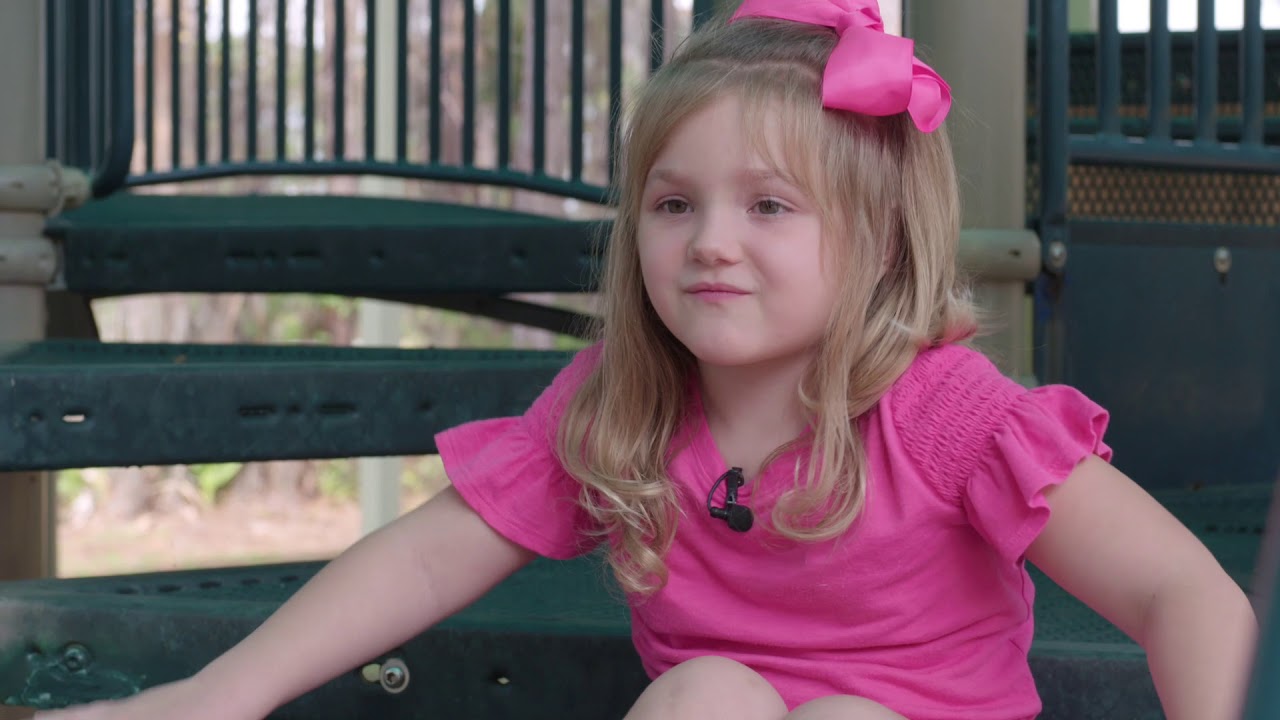


Childhood Leukemia
Leukemia is the most common cancer in children. We offer advanced treatments like CAR T-cell therapy that result in excellent survival rates for our patients.
Having a child diagnosed with leukemia is an overwhelming moment for a family. At Johns Hopkins All Children’s Cancer & Blood Disorders Institute in St. Petersburg, Florida, our team helps you navigate this new world as smoothly as possible.
Our blood cancer specialists see several hundred children with leukemia every year. This high volume gives us the expertise to effectively treat this complex cancer — even in the very youngest patients.
Thanks to the innovative treatments we offer, our five-year survival rates for many types of pediatric leukemia are 93 percent or greater. Children who are disease-free for five years are very likely cured.
Our program is recognized as a Top 50 Children's Cancer Program by U.S. News & World Report for 2023-2024.
On This Page:
- What Is Leukemia?
- What Causes Leukemia in Children?
- What Are the Early Symptoms of Leukemia in Children?
- How Do We Diagnose Leukemia?
- Types of Childhood Leukemia
- Leukemia Treatments We Offer
What Is Leukemia?
Leukemia is a blood cancer that causes abnormal white blood cells to grow in the bone marrow and move into the bloodstream.
The leukemia cells multiply, taking space away from healthy white blood cells, red blood cells and platelets. Without enough healthy white blood cells, children with leukemia are less able to fight off infection. A lack of healthy red blood cells can cause fatigue, shortness of breath and other symptoms. A low level of platelets causes easy bleeding and bruising.
Avalynn’s Battle with Childhood Leukemia
Avalynn was an active toddler until one day, a small fall eventually unveiled a larger health issue – childhood leukemia. Her parents share their story of finding a diagnosis that led them to Johns Hopkins All Children’s for treatment. With the help of a care team who became an extension of their family, Avalynn is now an active, energetic child.
We're Here To Help
For more information on how the team in the Cancer and Blood Disorders Institute at Johns Hopkins All Children's Hospital can help your child, please give us a call. Our expert team provides children of all ages with comprehensive, compassionate care.
Give us a call
What Causes Leukemia in Children?
Researchers still don’t have answers to this question. In most cases, your child’s doctor won’t be able to pinpoint a specific cause.
Some evidence suggests that gene mutations (changes) may play a role in childhood leukemia. The mutations may be inherited (passed down from parents), or the genes may mutate after conception or birth.
Having chemotherapy or radiation to treat another type of cancer can increase your child’s risk of developing leukemia. And children who have Down syndrome or Li-Fraumeni syndrome are also at a higher risk for the disease.
What Are the Early Symptoms of Leukemia in Children?
As leukemia cells multiply, they interfere with the production of healthy blood cells and bone marrow function. This can lead to a wide range of symptoms, including:
- Loss of appetite or weight loss
- Bleeding easily (including frequent nosebleeds or bleeding gums)
- Bone or joint pain
- Bruising easily
- Fatigue
- Fever
- Frequent infections
- Pale skin
- Shortness of breath
- Swollen lymph nodes
How Do We Diagnose Leukemia?
If your child has symptoms of leukemia, your doctor will order various tests to confirm a diagnosis. These tests may include:
- Complete blood count (CBC): Your child’s doctor will take a blood sample and analyze it. A CBC reveals the number of each type of blood cells and whether any of the blood cells look abnormal.
- Bone marrow aspiration and biopsy: Using a thin, hollow needle, we remove bone marrow samples to check for signs of leukemia.
- Lumbar puncture: This test is sometimes called a spinal tap. We use a thin, hollow needle to remove a spinal fluid sample and check it for leukemia cells.
How Logan Tackled Leukemia
Logan grew up watching his two older brothers play sports. When he finally turned 4 years old, it was his turn to show off his flag football skills, until a leukemia diagnosis almost sidelined him. With the help of his football team's motivation and the team at Johns Hopkins All Children’s, Logan is back on the field.
Types of Childhood Leukemia
Leukemia can be either acute (comes on quickly and progresses rapidly) or chronic (slower to grow and progress). There are three main types of childhood leukemia:
- Acute lymphoblastic leukemia (ALL): This is the most common type of leukemia in children. It affects infants, children and teenagers, but is most common in 1 to 10-year-olds. ALL starts in white blood cells called lymphocytes and progresses rapidly without treatment.
- Acute myeloid leukemia (AML): AML can affect very young children and adolescents. The disease starts in myeloid cells that normally mature into white or red blood cells or platelets.
- Chronic myeloid leukemia (CML): This type of leukemia in children is rare. The disease starts in the myeloid cells but progresses much more slowly than AML.
Leukemia Treatments We Offer
With the right treatment, leukemia can be cured in many children. Your child’s doctor will explain the benefits and risks of your treatment options. Recommended therapies depend on your child’s age, type of leukemia and overall health.
Childhood Leukemia Treatment Contact Us
For more information or to make an appointment, please give us a call at the phone number below. We serve families in the Tampa Bay area and beyond.



